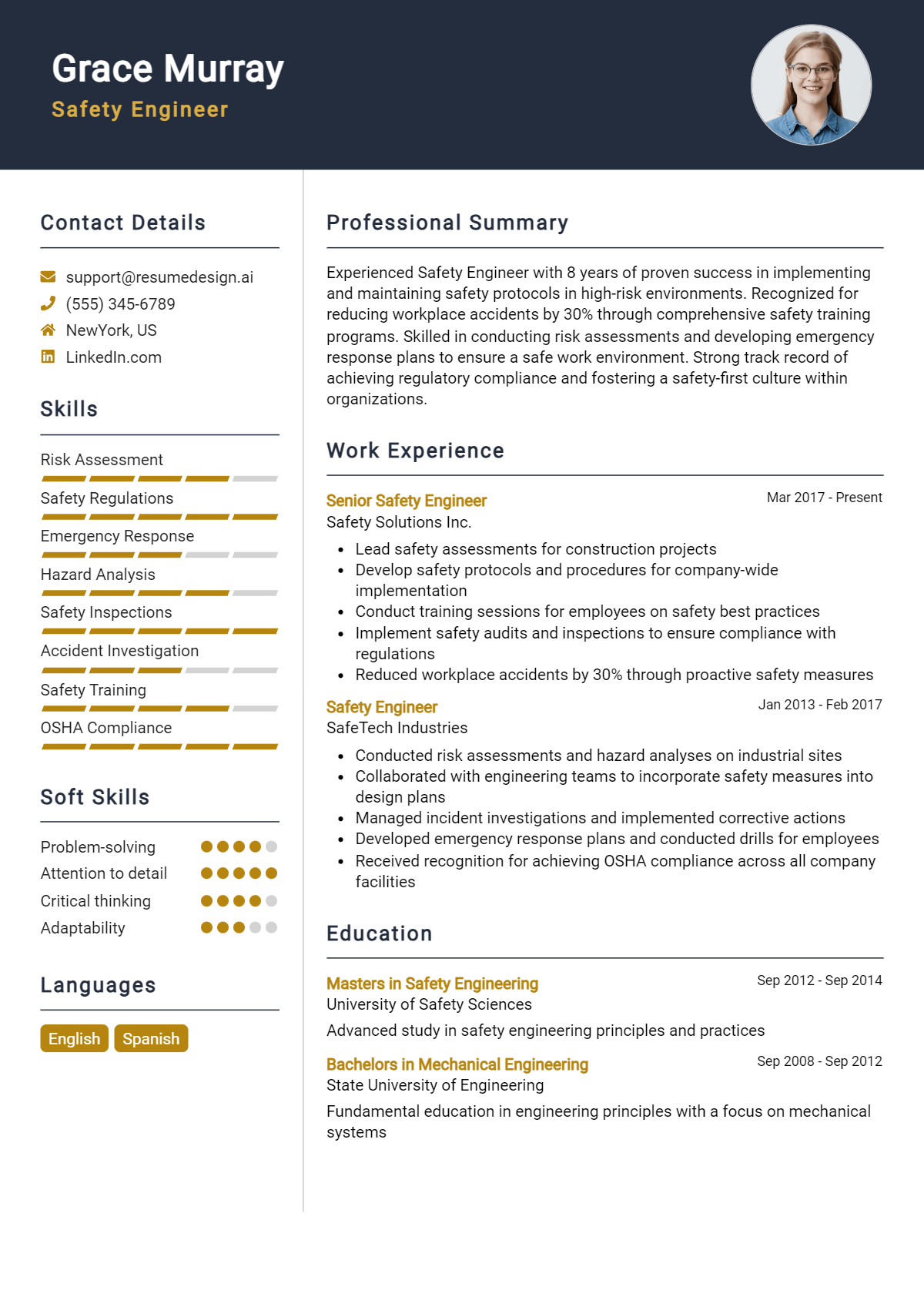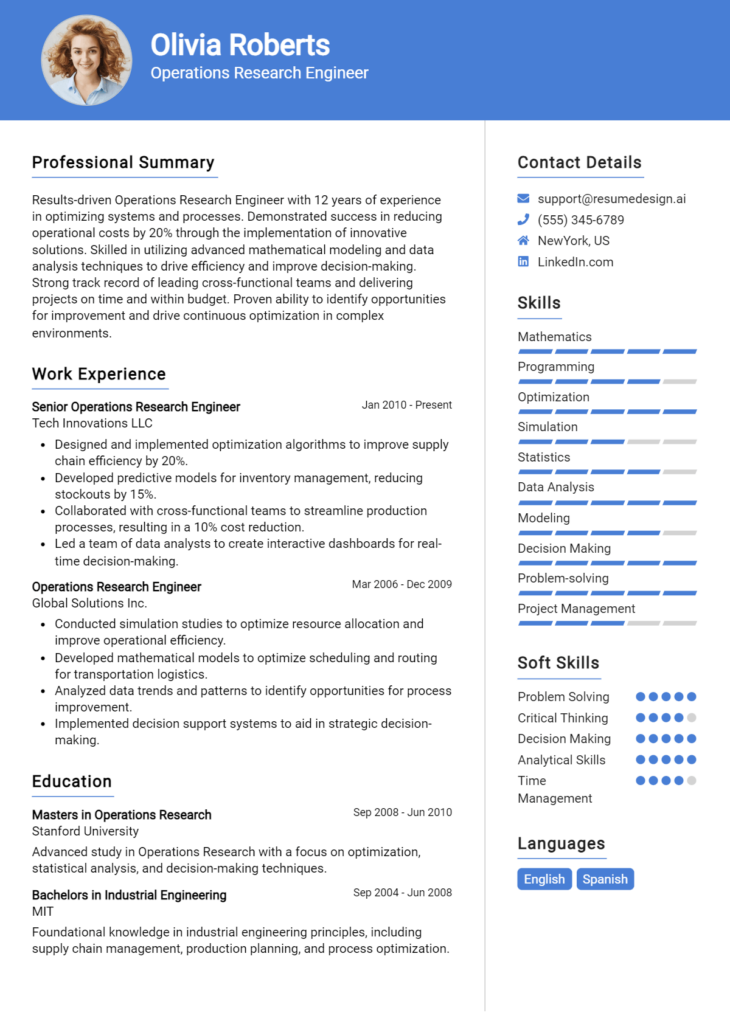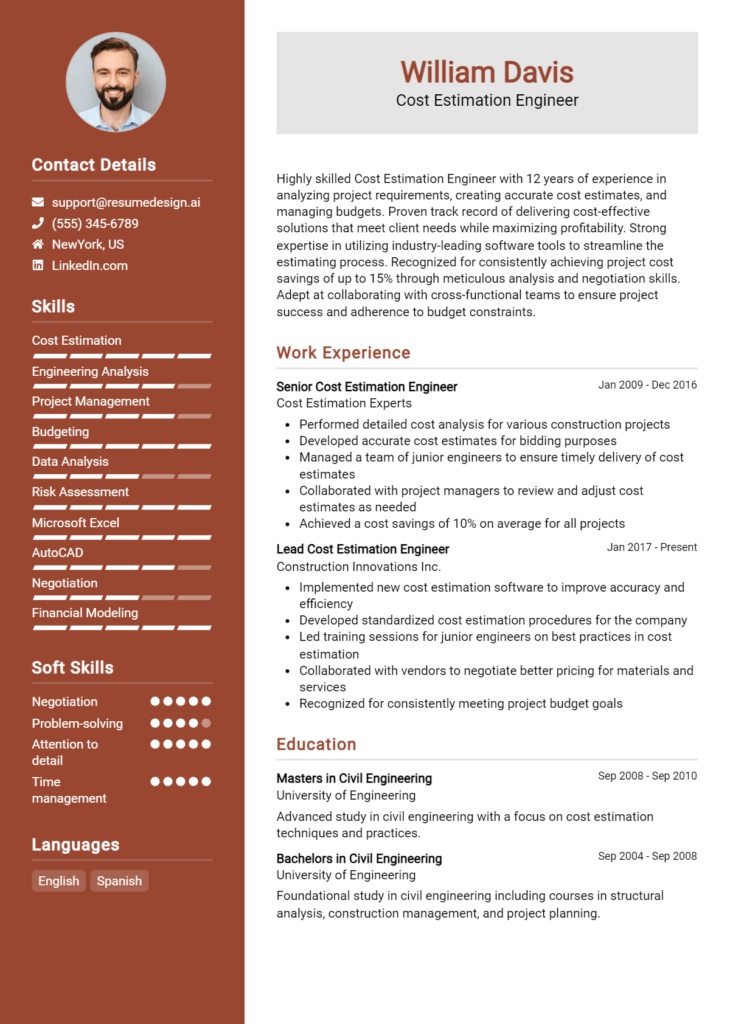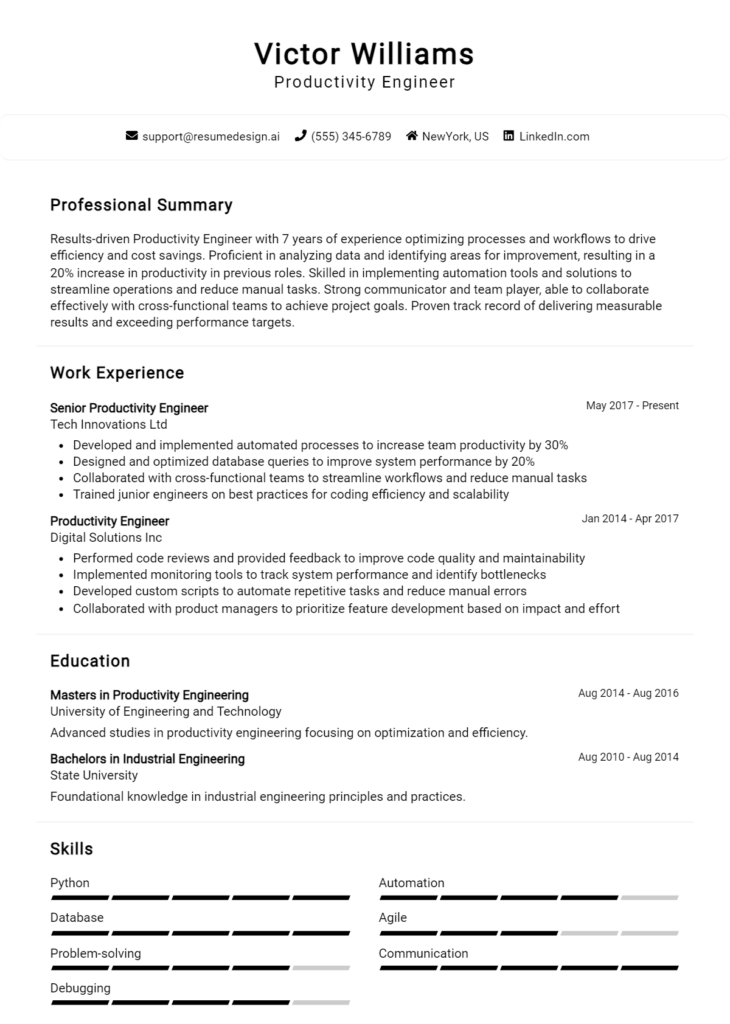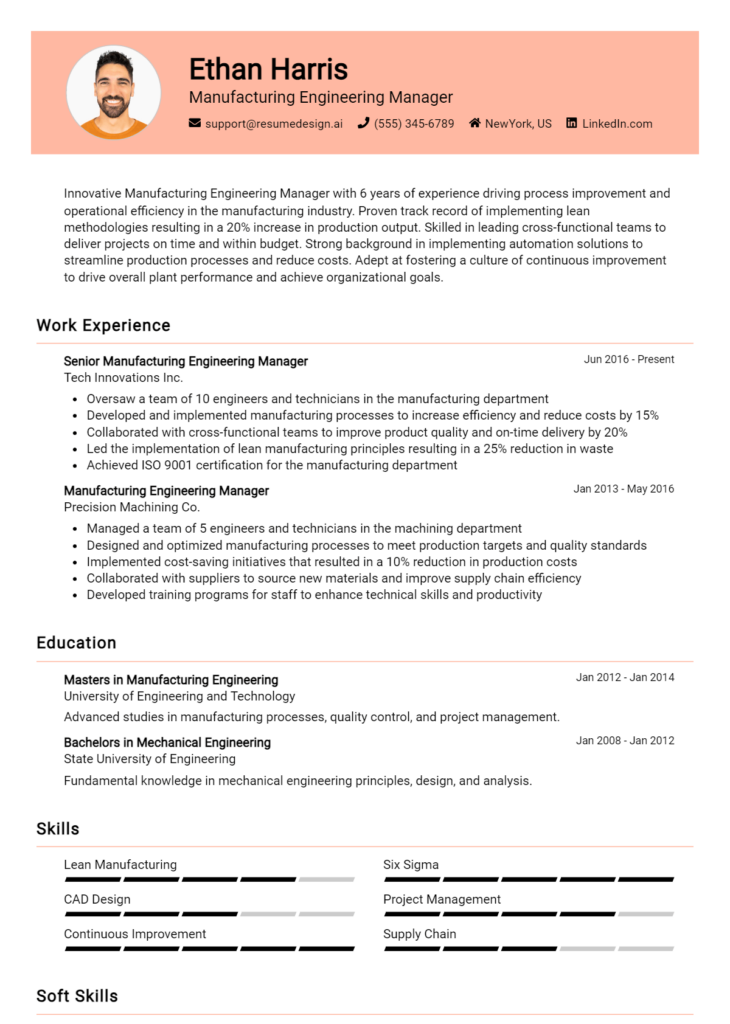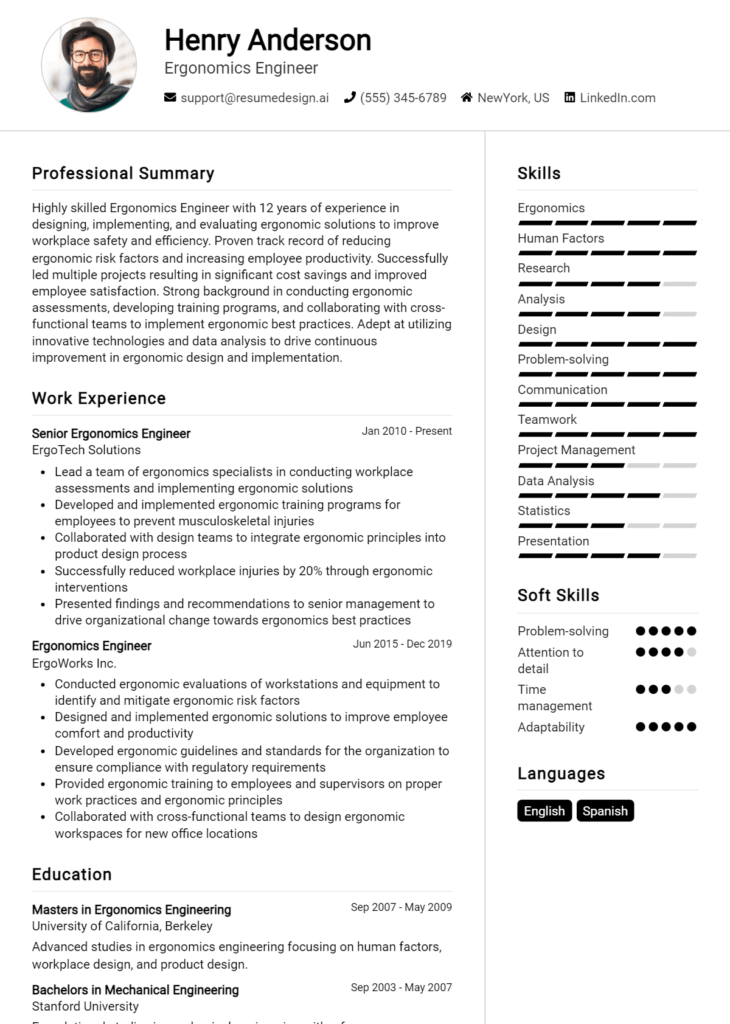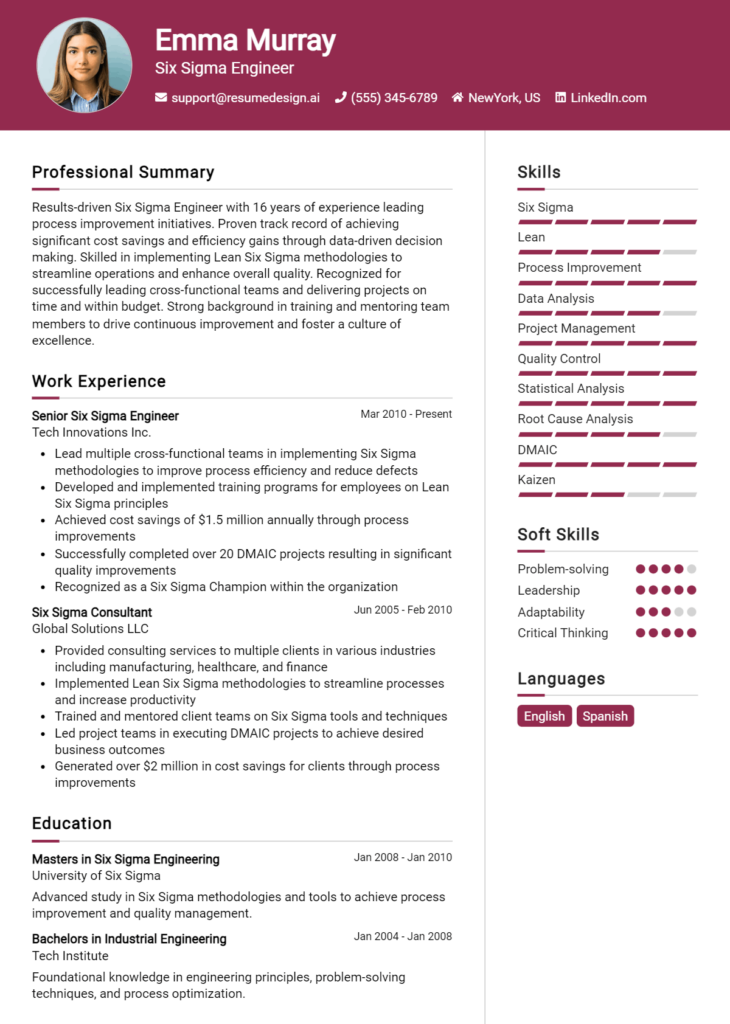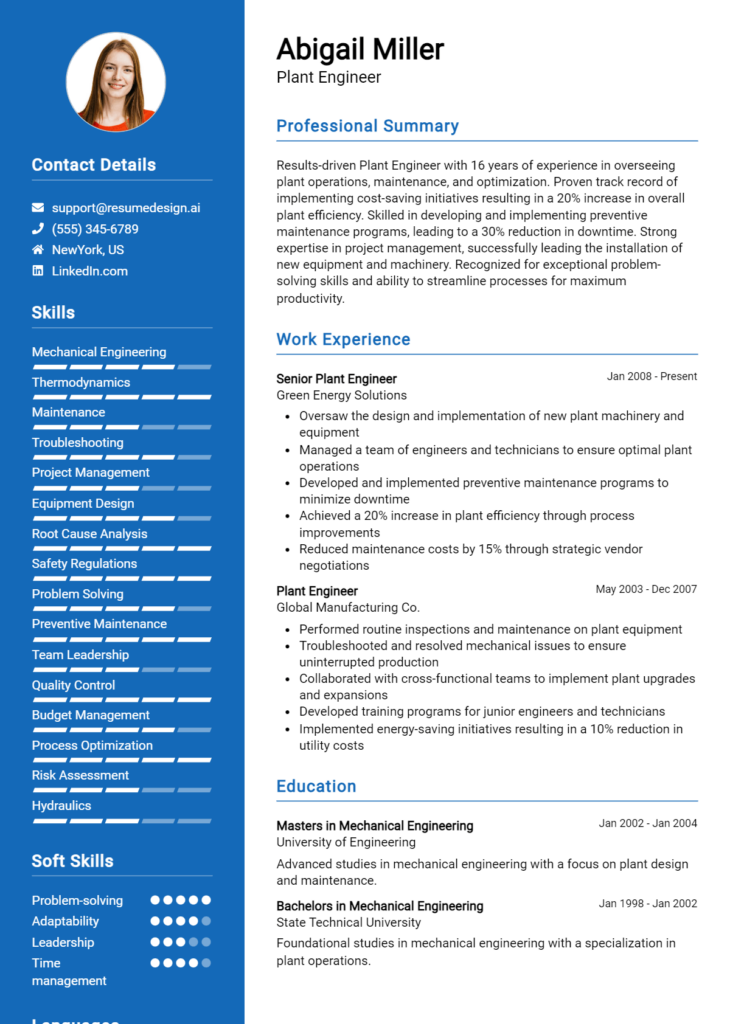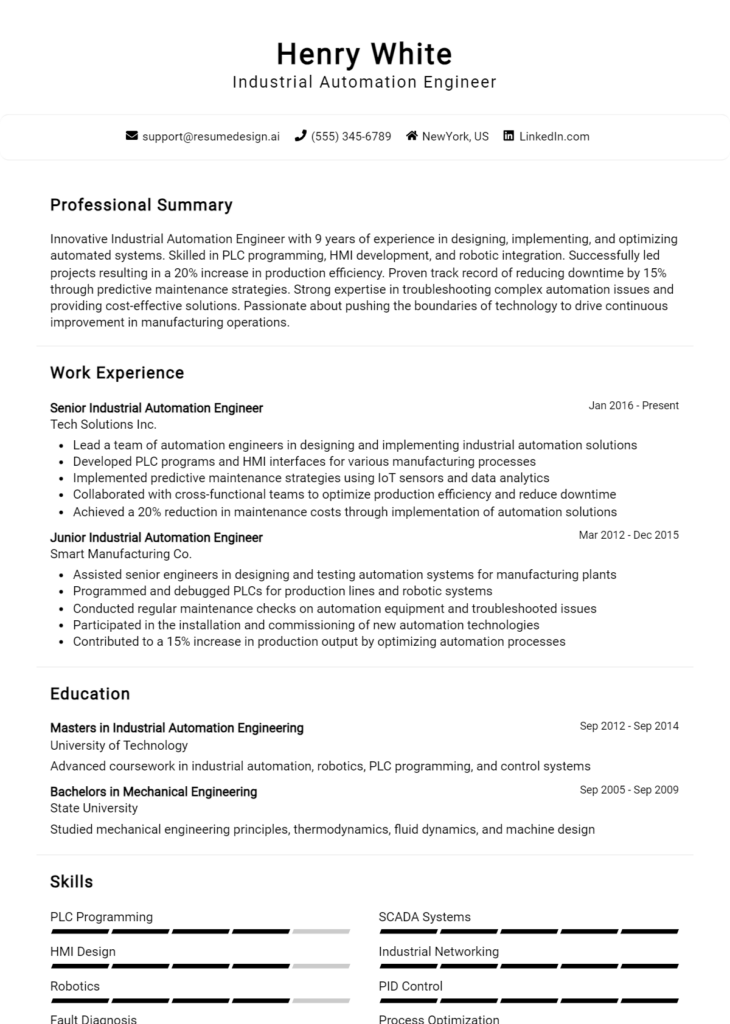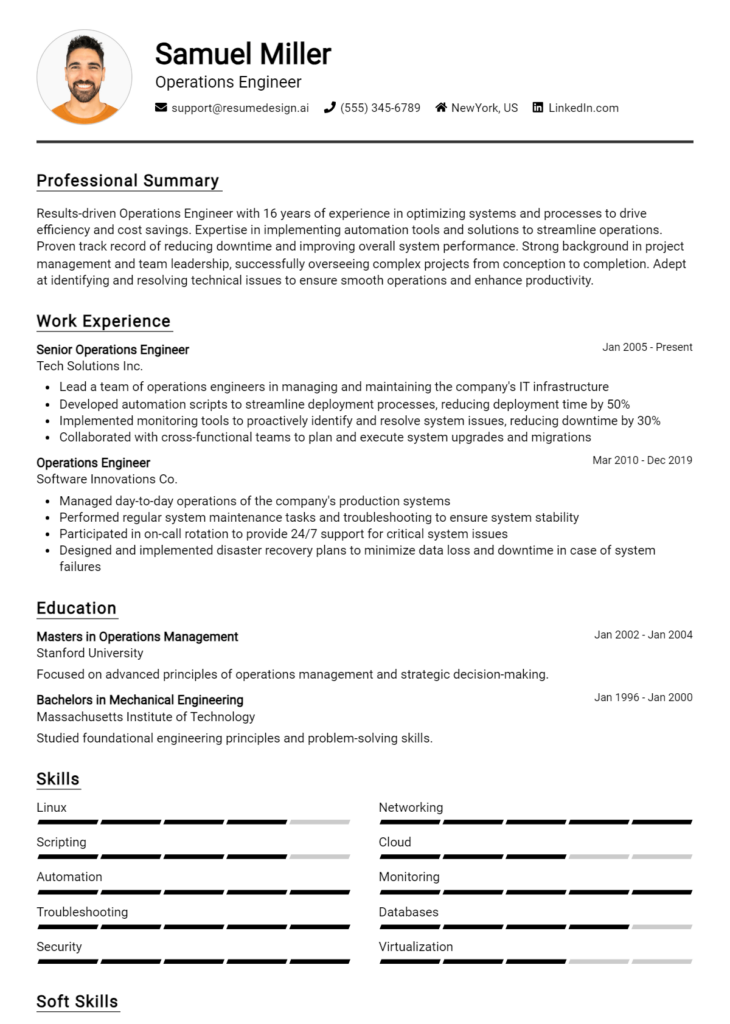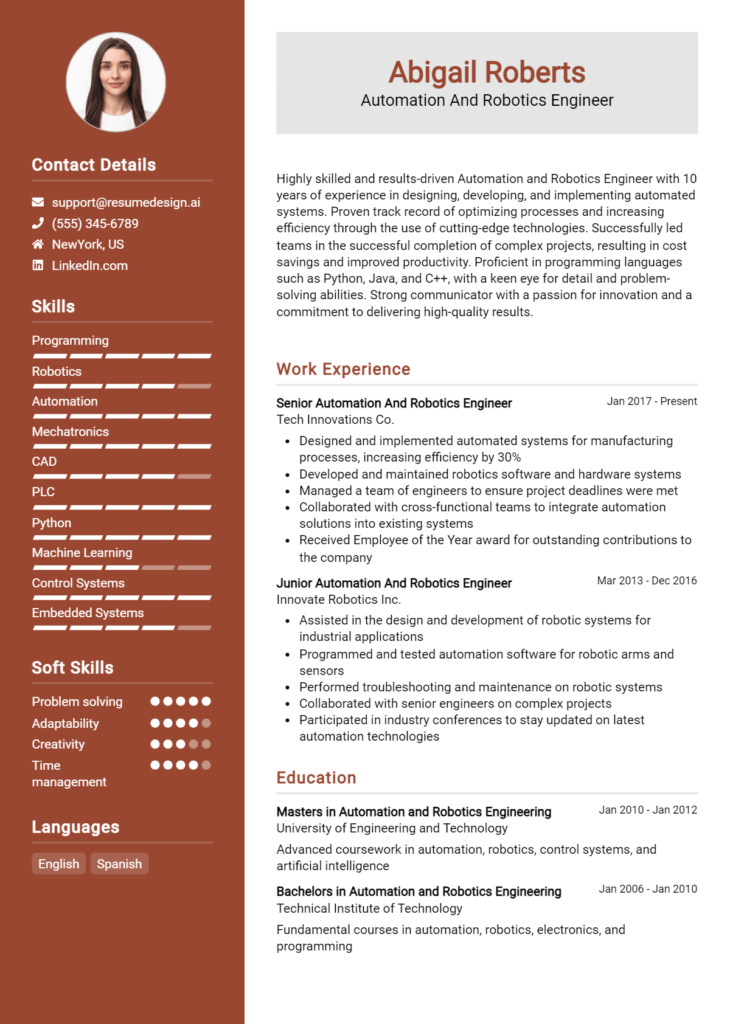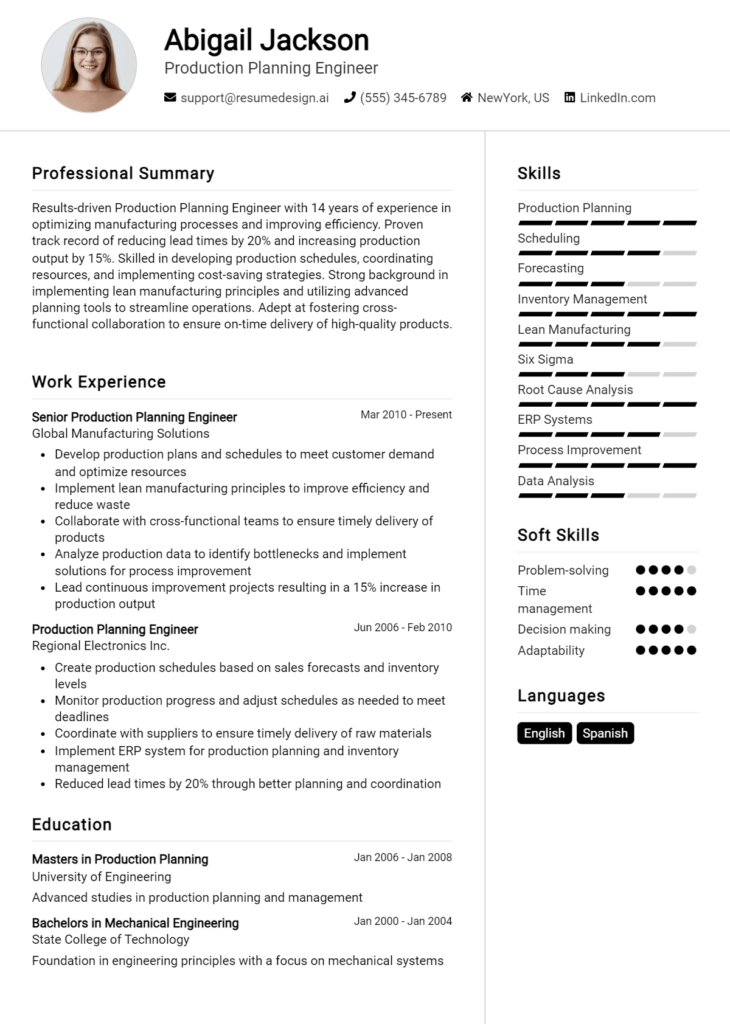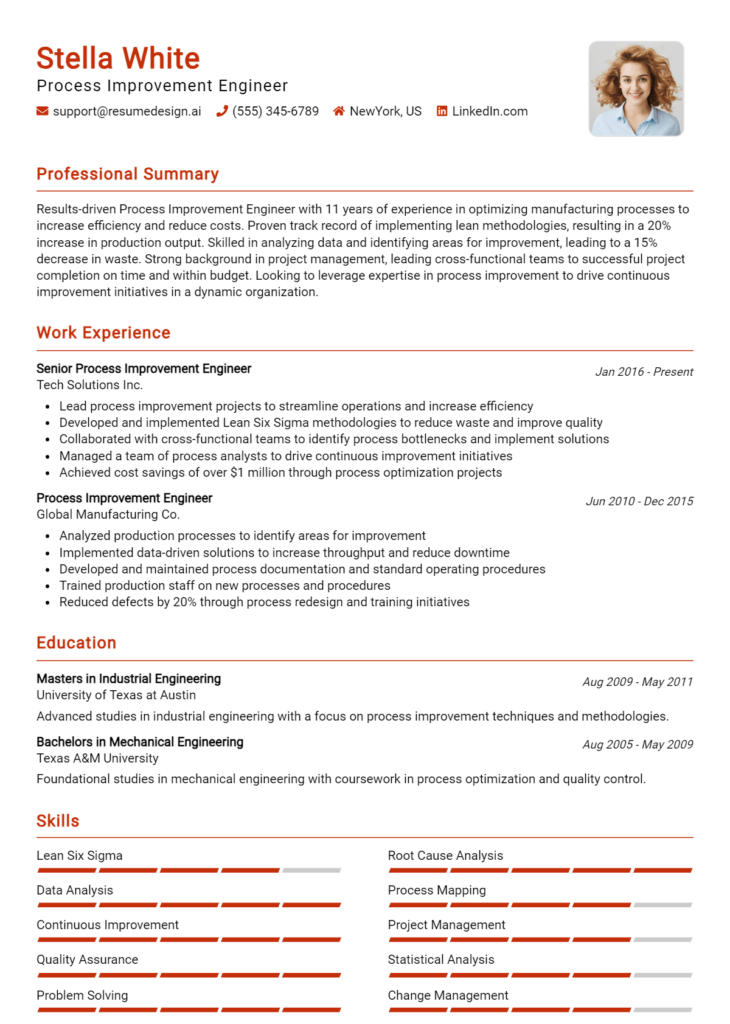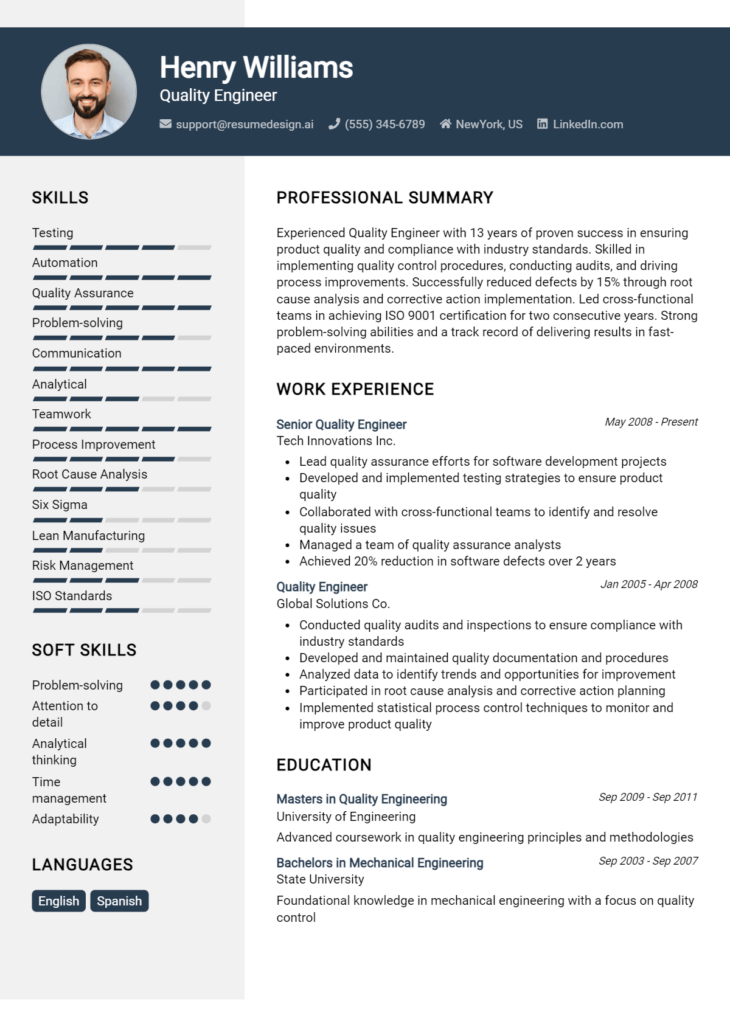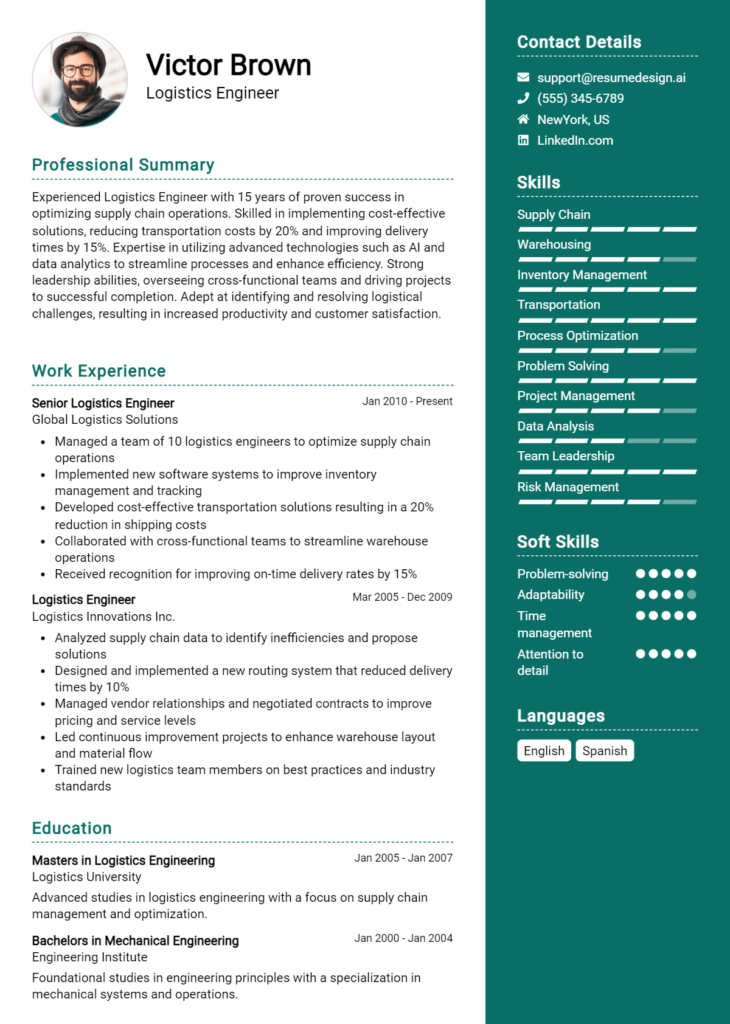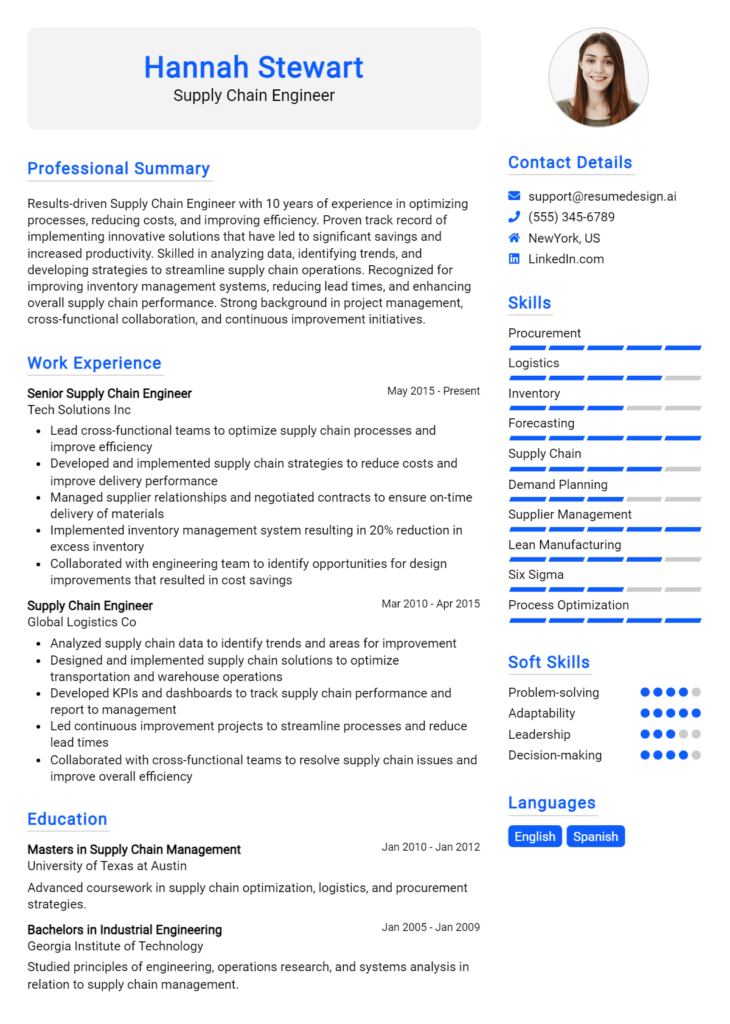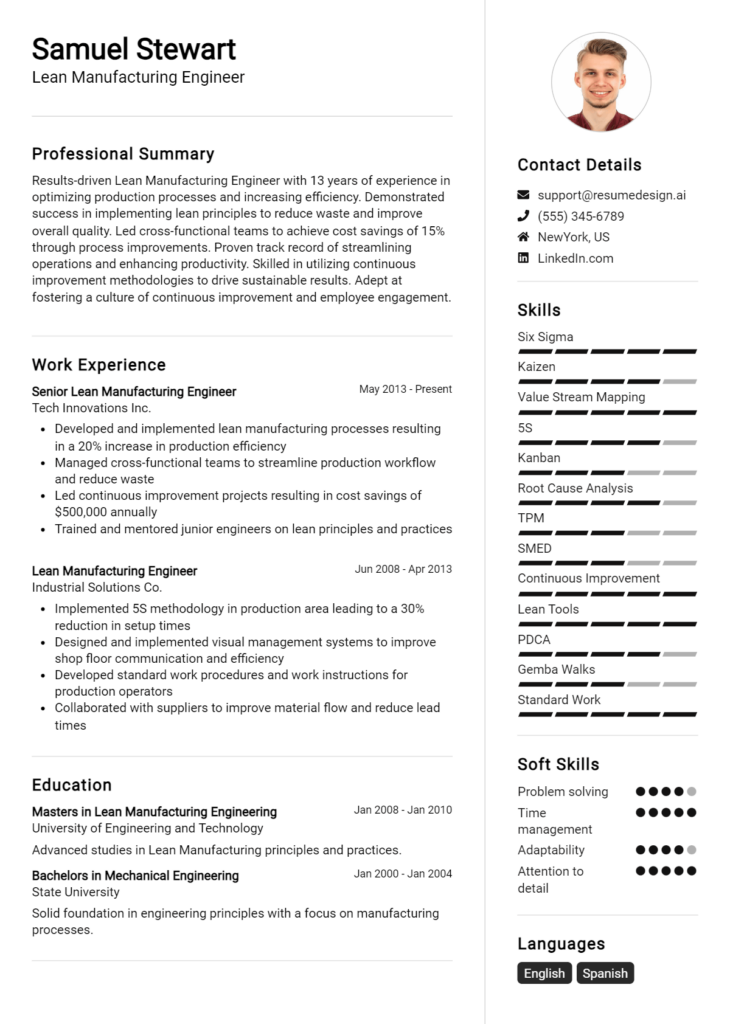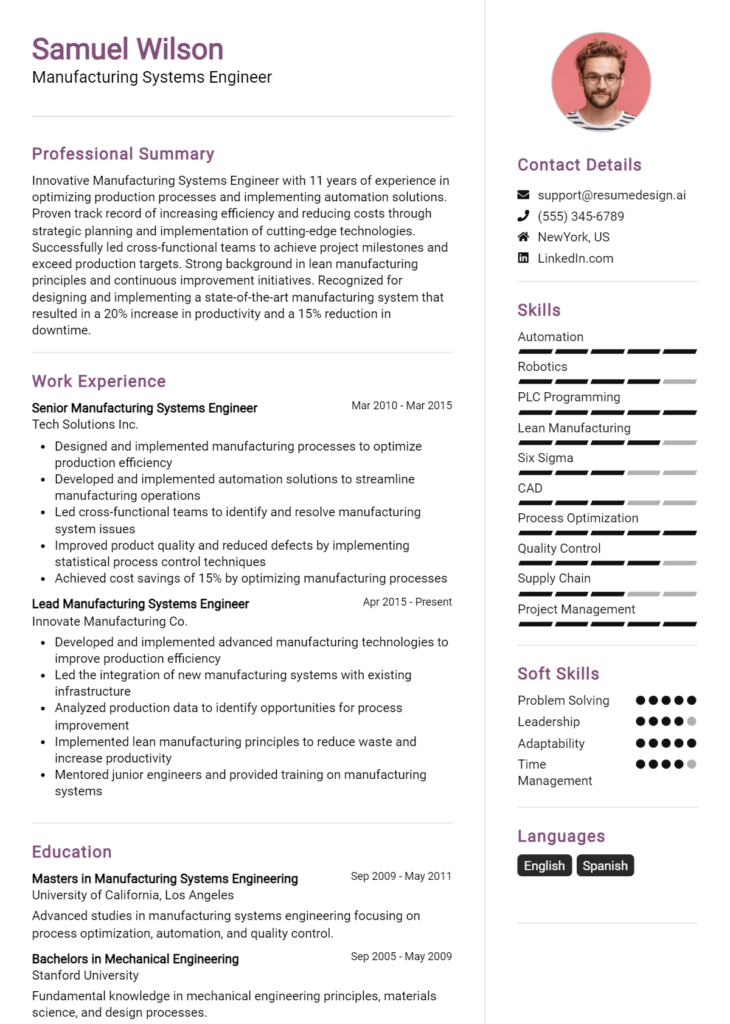Safety Engineer Core Responsibilities
A Safety Engineer plays a crucial role in ensuring workplace safety by identifying hazards, conducting risk assessments, and implementing safety protocols. This position requires a blend of technical knowledge, operational insight, and strong problem-solving skills to bridge various departments, such as operations, engineering, and management. These abilities contribute significantly to the organization's overarching safety goals. A well-structured resume showcasing these qualifications is essential for demonstrating competence and attracting potential employers.
Common Responsibilities Listed on Safety Engineer Resume
- Conducting safety audits and inspections to identify workplace hazards
- Developing and implementing safety policies and procedures
- Training employees on safety practices and emergency procedures
- Investigating accidents and incidents to determine root causes
- Collaborating with cross-functional teams to promote a culture of safety
- Maintaining compliance with safety regulations and standards
- Preparing safety reports and documentation for management
- Analyzing data to improve safety performance metrics
- Assisting in the design of safer work environments and processes
- Conducting risk assessments for new projects and equipment
- Participating in safety meetings and providing expert advice
High-Level Resume Tips for Safety Engineer Professionals
In the competitive field of safety engineering, a well-crafted resume is essential for making a strong first impression on potential employers. Your resume serves as the initial point of contact, showcasing not only your qualifications but also your dedication to maintaining high safety standards. It must effectively reflect your skills, achievements, and the specific contributions you can bring to the role. This guide aims to provide practical and actionable resume tips tailored specifically for Safety Engineer professionals, helping you create a document that stands out in the job market.
Top Resume Tips for Safety Engineer Professionals
- Tailor your resume to each job description by using keywords and phrases from the posting to demonstrate alignment with the role.
- Highlight relevant experience in safety management, risk assessment, and compliance to showcase your expertise in the field.
- Quantify your achievements with specific metrics, such as reduced incident rates or successful implementation of safety programs.
- Include industry-specific certifications, licenses, and training that reinforce your qualifications and commitment to safety standards.
- Utilize a clear and professional format to enhance readability and ensure important information is easily accessible.
- Showcase your technical skills, such as familiarity with safety software, regulations, and hazard identification techniques.
- Incorporate soft skills like communication, teamwork, and problem-solving, which are crucial for effective safety management.
- Provide examples of successful collaboration with cross-functional teams to highlight your ability to work in diverse environments.
- Keep your resume concise, ideally one page, focusing on the most relevant information to keep the reader engaged.
By implementing these tips, you can significantly enhance your chances of landing a job in the Safety Engineer field. A well-structured resume that showcases your relevant experience, achievements, and industry-specific skills will not only capture the attention of hiring managers but also demonstrate your commitment to promoting safety in the workplace.
Why Resume Headlines & Titles are Important for Safety Engineer
In the competitive field of safety engineering, a well-crafted resume headline or title can serve as a powerful tool for job seekers. A strong headline immediately captures the attention of hiring managers, allowing them to quickly gauge a candidate’s key qualifications and suitability for the role. It summarizes essential skills and experiences in a concise and relevant manner, directly correlating with the job being applied for. This first impression can be critical, as it sets the tone for the rest of the resume and can differentiate a candidate from the competition.
Best Practices for Crafting Resume Headlines for Safety Engineer
- Keep it concise: Aim for a headline that is no longer than 10 words.
- Be role-specific: Clearly indicate your role and area of expertise.
- Highlight key qualifications: Include certifications or skills that are most relevant to the position.
- Use powerful action words: Start with strong verbs that convey your achievements.
- Tailor for each application: Customize your headline to align with the specific job description.
- Avoid jargon: Use clear language that is easily understood by all hiring managers.
- Showcase accomplishments: If possible, include quantifiable results to demonstrate your impact.
- Maintain professionalism: Ensure the tone aligns with the expectations of the safety engineering field.
Example Resume Headlines for Safety Engineer
Strong Resume Headlines
Certified Safety Engineer with 10+ Years of Experience in Hazard Analysis
Results-Driven Safety Specialist Focused on Workplace Compliance and Risk Mitigation
Proven Track Record in Developing Safety Protocols to Reduce Incident Rates
Weak Resume Headlines
Safety Engineer
Experienced Professional Looking for Opportunities
The strong resume headlines are effective because they encapsulate the candidate’s strengths and relevant experiences, making them immediately appealing to hiring managers. They highlight specific qualifications and accomplishments that align with the job, providing a snapshot of what the candidate brings to the table. In contrast, the weak headlines lack specificity and do not convey any actionable information about the candidate’s skills or background. This vagueness can lead to disinterest from hiring managers, who are looking for precise qualifications that meet their needs.
Writing an Exceptional Safety Engineer Resume Summary
A well-crafted resume summary is crucial for a Safety Engineer, as it serves as the first impression a hiring manager will have of a candidate. A strong summary quickly captures attention by succinctly showcasing key skills, relevant experience, and notable accomplishments that align with the job role. It should be concise, impactful, and tailored to the specific position being applied for, ensuring that the candidate stands out in a competitive job market.
Best Practices for Writing a Safety Engineer Resume Summary
- Quantify Achievements: Use numbers and metrics to highlight your impact and contributions, such as reducing workplace incidents by a specific percentage.
- Focus on Relevant Skills: Emphasize skills that are directly applicable to the job description, such as risk assessment, safety protocols, and compliance regulations.
- Tailor for the Job Description: Customize your summary for each application, reflecting the specific requirements and responsibilities of the position.
- Highlight Certifications: Mention relevant safety certifications or training that enhance your credibility as a Safety Engineer.
- Keep it Concise: Aim for 3-5 sentences that deliver your key points without unnecessary elaboration.
- Use Action-Oriented Language: Start with strong action verbs to convey your achievements and responsibilities effectively.
- Showcase Leadership: If applicable, highlight any leadership roles or initiatives you’ve led that improved safety outcomes.
- Maintain Professional Tone: Use formal language and avoid jargon or overly casual expressions to keep it professional.
Example Safety Engineer Resume Summaries
Strong Resume Summaries
Dedicated Safety Engineer with over 7 years of experience in developing and implementing safety programs that resulted in a 40% reduction in workplace incidents. Proficient in conducting risk assessments and ensuring compliance with OSHA regulations.
Results-driven Safety Engineer with a proven track record of enhancing safety protocols, achieving a 30% improvement in safety audit scores. Skilled in training staff on safety procedures and leading incident investigations.
Innovative Safety Engineer with expertise in hazard analysis and accident prevention, leading initiatives that decreased downtime by 25% through effective safety management systems. Holds multiple industry certifications including CSP and NEBOSH.
Weak Resume Summaries
Safety Engineer with experience in safety practices and compliance. Looking for a new job opportunity.
A motivated individual seeking to apply safety engineering skills in a new role. Experienced in various safety tasks.
The examples of strong resume summaries are effective because they are specific, quantifiable, and directly relevant to the Safety Engineer role. They emphasize concrete achievements and essential skills that demonstrate the candidate's value. In contrast, the weak summaries lack detail, specificity, and measurable outcomes, making them less impactful and memorable to hiring managers.
Work Experience Section for Safety Engineer Resume
The work experience section of a Safety Engineer resume is pivotal as it provides a comprehensive overview of the candidate's practical skills and contributions in the field. This section allows potential employers to gauge the applicant's technical expertise, ability to lead and manage teams, and proficiency in delivering high-quality safety solutions. By quantifying achievements and ensuring alignment with industry standards, candidates can effectively demonstrate their impact and value within previous roles. A well-crafted work experience section not only showcases accomplishments but also reinforces the candidate's qualifications for the position they seek.
Best Practices for Safety Engineer Work Experience
- Highlight specific technical skills relevant to safety engineering, such as risk assessment, safety audits, and compliance regulations.
- Quantify accomplishments with measurable outcomes, like percentage reductions in incidents or cost savings achieved through safety initiatives.
- Emphasize leadership and collaboration by detailing team management experiences and cross-functional projects.
- Use action verbs to convey proactivity and impact, such as "developed," "implemented," or "led."
- Align work experience with industry standards and best practices to demonstrate familiarity with current safety protocols.
- Include certifications and training relevant to safety engineering to enhance credibility.
- Tailor the experience section to the specific job description, mirroring key terms and requirements from the posting.
- Maintain clarity and conciseness to ensure the information is easily digestible for hiring managers.
Example Work Experiences for Safety Engineer
Strong Experiences
- Led a team of 5 safety specialists to implement a new safety management system, resulting in a 30% reduction in workplace accidents over 12 months.
- Conducted over 50 safety audits across multiple facilities, identifying and rectifying compliance issues that saved the company $200,000 in potential fines.
- Collaborated with engineering teams to design safety protocols for a new manufacturing facility, achieving regulatory approval ahead of schedule.
- Developed and delivered training programs for over 200 employees, improving safety awareness and reducing incident reports by 25% within 6 months.
Weak Experiences
- Responsible for ensuring safety regulations were met.
- Worked on safety-related projects with team members.
- Assisted in safety audits and compliance checks.
- Helped develop safety training materials.
The experiences categorized as strong showcase specific, quantifiable achievements that demonstrate the candidate's technical skills and leadership abilities. They highlight measurable outcomes and direct contributions to safety improvements, making them impactful and relevant. In contrast, the weak experiences lack detail and fail to convey any significant accomplishments or contributions, making them less compelling to potential employers. This illustrates the importance of specificity and quantification in conveying a candidate's value in the safety engineering field.
Education and Certifications Section for Safety Engineer Resume
The education and certifications section of a Safety Engineer resume plays a crucial role in establishing the candidate's qualifications and expertise in the field. This section not only showcases the academic background but also emphasizes the importance of industry-relevant certifications and ongoing learning. By providing details such as relevant coursework, specialized training, and recognized credentials, candidates can significantly enhance their credibility and demonstrate their alignment with the specific requirements of the job role. A well-structured education and certifications section can make a lasting impression on potential employers, showcasing the candidate's commitment to safety engineering excellence.
Best Practices for Safety Engineer Education and Certifications
- Include only relevant degrees and certifications applicable to safety engineering.
- Detail the coursework that directly relates to safety standards, regulations, and practices.
- Highlight advanced or industry-recognized certifications such as CSP (Certified Safety Professional) or CIH (Certified Industrial Hygienist).
- List any specialized training programs that expand your skill set in safety management or risk assessment.
- Keep the formatting clean and consistent for easy readability.
- Use clear headings and bullet points to make important information stand out.
- Provide dates of completion to reflect your most current qualifications.
- Consider including ongoing education efforts, such as workshops or seminars, to show commitment to continuous improvement.
Example Education and Certifications for Safety Engineer
Strong Examples
- Bachelor of Science in Environmental Health and Safety, University of XYZ, 2021
- Certified Safety Professional (CSP), Board of Certified Safety Professionals, 2022
- OSHA 30-Hour General Industry Training, Completed 2023
- Master’s Certificate in Safety Management, ABC Institute, 2020
Weak Examples
- Bachelor of Arts in English Literature, University of XYZ, 2019
- First Aid/CPR Certification, 2015 (Expired)
- Certificate in Microsoft Office Applications, 2018
- High School Diploma, Graduated 2010
The strong examples are considered robust because they are directly relevant to the role of a Safety Engineer, showcasing degrees and certifications that reflect a commitment to safety practices and standards. They demonstrate the candidate's qualifications and readiness for the position. Conversely, the weak examples lack relevance to the safety engineering field, featuring outdated or unrelated qualifications that do not support the candidate’s application for a safety-focused role. This contrast highlights the importance of aligning educational and certification achievements with the job requirements.
Top Skills & Keywords for Safety Engineer Resume
In the competitive job market for Safety Engineers, showcasing the right skills on your resume is crucial to stand out to potential employers. A well-crafted resume must highlight both hard and soft skills, as these attributes demonstrate your technical proficiency and your ability to collaborate effectively within a team. Employers seek candidates who not only possess the necessary technical knowledge but also exhibit strong interpersonal abilities, problem-solving skills, and a commitment to safety standards. By emphasizing these skills, you can illustrate your readiness to tackle the diverse challenges that come with ensuring workplace safety.
Top Hard & Soft Skills for Safety Engineer
Soft Skills
- Communication Skills
- Teamwork and Collaboration
- Problem-Solving
- Attention to Detail
- Analytical Thinking
- Time Management
- Leadership
- Adaptability
- Conflict Resolution
- Critical Thinking
Hard Skills
- Risk Assessment and Management
- Knowledge of OSHA Regulations
- Safety Audits and Inspections
- Emergency Response Planning
- Environmental Health and Safety (EHS) Standards
- Incident Investigation Techniques
- Hazardous Materials Handling
- Safety Training and Education
- Data Analysis and Reporting
- Proficiency in Safety Software and Tools
Focusing on these skills will not only enhance your resume but also reflect your comprehensive understanding of the Safety Engineer role. Additionally, it’s essential to pair these skills with relevant work experience to provide a well-rounded representation of your capabilities to prospective employers.
Stand Out with a Winning Safety Engineer Cover Letter
I am writing to express my interest in the Safety Engineer position at [Company Name], as advertised on [Job Board/Company Website]. With a robust background in safety management, compliance with regulatory standards, and a proven track record of enhancing workplace safety protocols, I am confident in my ability to contribute effectively to your team. My educational foundation in engineering, coupled with my certifications in safety management, provides me with a comprehensive understanding of the technical and regulatory aspects of occupational health and safety.
In my previous role at [Previous Company], I successfully led initiatives that reduced workplace incidents by 30% over two years. This was achieved through the implementation of rigorous safety training programs, regular safety audits, and the development of emergency response plans tailored to specific operational needs. By fostering a culture of safety awareness among employees, I was able to engage staff at all levels, which resulted in increased compliance and a significant decline in accidents. I am eager to bring this proactive approach to [Company Name] to further enhance your safety standards.
I am particularly impressed with [Company Name]'s commitment to innovation and continuous improvement in safety practices. I share this philosophy and believe that effective safety engineering is not just about compliance but also about instilling a mindset of safety among all employees. I am excited about the possibility of collaborating with your team to develop and implement strategies that not only meet regulatory requirements but also promote a safe and healthy work environment.
Thank you for considering my application. I look forward to the opportunity to discuss how my experience and vision align with the goals of [Company Name]. I am eager to contribute to your mission of ensuring a safe workplace and to help cultivate a culture of excellence in safety engineering.
Common Mistakes to Avoid in a Safety Engineer Resume
When crafting a resume for a Safety Engineer position, it's essential to present your qualifications and experiences in the best possible light. However, many candidates make common mistakes that can diminish their chances of standing out to employers. Avoiding these pitfalls can significantly enhance your resume's effectiveness and showcase your suitability for the role. Here are some common mistakes to be aware of:
Generic Objective Statements: Using a vague or generic objective does not capture the attention of hiring managers. Tailor your objective to reflect your specific career goals and how they align with the company's mission.
Neglecting Relevant Certifications: Safety Engineers often require specific certifications (e.g., OSHA, NEBOSH). Failing to prominently display these qualifications can make your resume less competitive.
Omitting Quantifiable Achievements: Listing responsibilities without quantifying results can weaken your impact. Use metrics to illustrate your contributions, such as reduced incident rates or successful safety audits.
Lack of Keywords: Many companies use applicant tracking systems (ATS) to filter resumes. Failing to include relevant industry-specific keywords can result in your resume being overlooked.
Inconsistent Formatting: A cluttered or inconsistent format can detract from the professionalism of your resume. Ensure uniformity in font styles, sizes, and spacing throughout the document.
Focusing Too Much on Technical Skills: While technical expertise is crucial, soft skills such as communication, teamwork, and problem-solving are equally important for a Safety Engineer. Make sure to highlight both.
Ignoring Safety Regulations and Standards: Employers look for candidates who are familiar with industry regulations and standards. Not mentioning your knowledge of these can be a missed opportunity to showcase your expertise.
Failing to Customize for Each Application: Sending out the same resume for every job application can come across as impersonal. Tailor your resume for each position by emphasizing the skills and experiences that are most relevant to the job description.
Conclusion
In conclusion, the role of a Safety Engineer is pivotal in ensuring workplace safety by identifying hazards, implementing safety measures, and adhering to regulatory standards. Understanding the essential skills, qualifications, and experiences that employers seek can significantly enhance your job prospects in this field.
As you reflect on your career in safety engineering, it's crucial to ensure that your resume effectively showcases your qualifications and experiences. Take the time to review your Safety Engineer Resume and make necessary updates to highlight your strengths and achievements.
To assist you in this process, consider leveraging available resources such as resume templates, which provide a structured format to present your information neatly. You can also use a resume builder to create a professional-looking resume quickly and easily. For inspiration, explore resume examples that demonstrate successful presentations of qualifications tailored for Safety Engineers. Additionally, don’t overlook the importance of a compelling first impression with a well-crafted cover letter; check out our cover letter templates to get started.
Take action now to refine your resume and stand out in the competitive job market!

